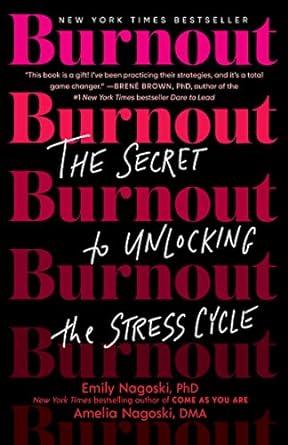More on this book
Community
Kindle Notes & Highlights
Read between
January 1 - January 3, 2024
“burnout” was defined by three components: 1. emotional exhaustion—the fatigue that comes from caring too much, for too long; 2. depersonalization—the depletion of empathy, caring, and compassion; and 3. decreased sense of accomplishment—an unconquerable sense of futility: feeling that nothing you do makes any difference.1
research has found it’s the first element in burnout, emotional exhaustion, that’s most strongly linked to negative impacts on our health, relationships, and work—especially for women.6
Exhaustion happens when we get stuck in an emotion.
Sometimes we get stuck because we can’t find our way through. The most difficult feelings—rage, grief, despair, helplessness—may be too treacherous to move through alone.
In the Star Wars movie Episode V: The Empire Strikes Back, Luke Skywalker sees an evil cave. Looking toward the entrance in dread, he asks his teacher Yoda, “What’s in there?” Yoda answers, “Only what you take with you.”
Meaning is often misunderstood as “the thing we’ll find at the end of the tunnel,” but it’s not. It’s why we go through the tunnel, regardless of what we find on the other end.
Dealing with your stress is a separate process from dealing with the things that cause your stress. To deal with your stress, you have to complete the cycle.
But addressing the cause of the stress doesn’t mean you’ve addressed the stress itself. Your body is soaked in stress juice, just waiting for some cue that you are now safe from the potential threat and can relax into celebration.
Let’s think about what this does to just one system, the cardiovascular: Chronically activated stress response means chronically increased blood pressure, which is like constantly turning a firehose on in your blood vessels, when those vessels were designed by evolution to handle only a gently flowing stream. The increased wear and tear on your blood vessels leads to increased risk for heart disease. That’s how chronic stress leads to life-threatening illness.
This is the upside-down world we live in: in most situations in the modern, post-industrial West, the stress itself will kill you faster than the stressor will—unless you do something to complete the stress response cycle.


